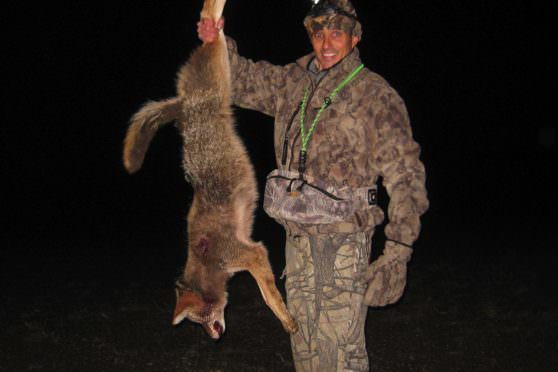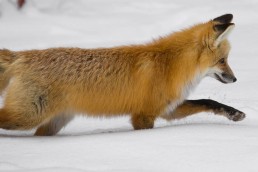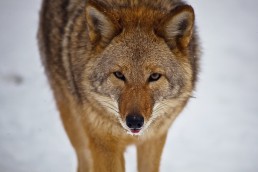Tracking a True Survivor: Coyote Hunting in Winter
SHARE THIS POST
As winter settles in across our Midwestern states, most hunting opportunities are over. But that’s not the case when it comes to pursuing and calling coyotes, a passion for a man named Paul Cianciolo.
Starting at the young age of 8, Cianciolo quickly realized his passion for the outdoors stretched farther than your typical seasonal hunter. Mesmerized by everything encompassing deer hunting, he knew there were other avenues of hunting he wanted to pursue.
In the early ’90s, when Cianciolo was 14, he began reading any article relating to coyote hunting he could get his hands on. Reading wasn’t enough. He eventually saved up and purchased a few VHS tapes to really get the blood pumping.

“I was always a thrill seeker,” he remembers, “and coyote hunting was just the thing I needed. At 14, the snarling wild beast—the coyote—was somewhat of a mythical, mysterious animal to me that very few people had interaction with. I spent all of my free time in the woods learning about coyotes.”
Cianciolo started out coyote hunting with a few predator calls by Lohman and Johnny Stewart, who, in his eyes, were the coyote masters. He practiced howling and distress sounds and steadily became more confident in his ability to hone in on the instincts of the wild dogs. Eventually, Cianciolo was able to save up for his first Johnny Stewart electronic cassette caller and became the envy of his hunting group.
Calling all coyotes
When asked how he calls in coyotes, his preferred method is to start with an electronic caller. “They are much louder than any hand caller and portray a group howl, which piques a lone coyote’s interest,” he says. “When I sight a coyote, I switch to a hand call to mimic a realistic position. A coyote can pick out your location from a mile away. Make sure your calling pace is spread out so you are able to see them before they see you.”
A huge key to success, especially late in the season, is patience.
“What you see on television is not the case with most situations,” he says. “You might hunt them 10 times before you actually get a chance to even see a coyote.”
Are you enjoying this post?
You can be among the first to get the latest info on where to go, what to use and how to use it!
As with deer hunting, wind direction is critical.
“Coyotes want to smell what is making a sound before they eat it,” says Cianciolo. “Break up your silhouette, hunt downwind, and keep your eyes peeled at all times. An old Indian once said, “When everything else has vanished from the planet, there will be one survivor. The coyote.”
This degree of elusiveness, the endless challenge these wary predators offer, keeps Cianciolo fascinated. To the point, in fact, that he has turned his obsession to creating solutions that help his own hunting, then bringing them to market.
Starting back in high school, he would sneak the red ruby lith film they used in graphic arts class and cover the lens of his old Q Beam and Optronics spotlights. The goal was to generate a particular red beam of light used to track coyotes. He used various power sources to create this light, including car batteries. He used an old 1983 Honda Big Red three-wheeler as a transport vehicle for all of the equipment.
Still in his mid-teens, Cianciolo started hearing more and more coyotes. Because the locals were not overly familiar with the pack of wild dogs, he knew there would be a significant learning curve in hunting them. Trial and error eventually led him and his group of friends to coyote hunting success. He remembers his first kill: after spotting a big male coyote, and after much persistence, he finally had a shot opportunity, and made good on it.
Over the years, he designed a headlamp system (NightSnipe) that allowed interchangeable lights to be used when hunting any type of game, sold by Predator Hunter Outdoors.
During late winter, on many snowy nights, you’ll find Paul Cianciolo prowling likely coyote haunts, sounding like a wild dog, sounding like a wild dog’s prey, remaining ready to pull the trigger when the time is right.
Sounds like fun, doesn’t it?
MWO
SHARE THIS POST
Did you enjoy this post?
You can be among the first to get the latest info on where to go, what to use and how to use it!
Alison Marie
Alison Marie was born and raised in southern Minnesota, where she runs Rack ‘em Guide Service. You can find her in the woods and fields chasing ducks, geese, deer, and turkeys, or on the water fishing. Her day job is at USDA Natural Resources Conservation Service, helping people help the land. She’s President of St. Charles chapter of Whitetails Unlimited.


